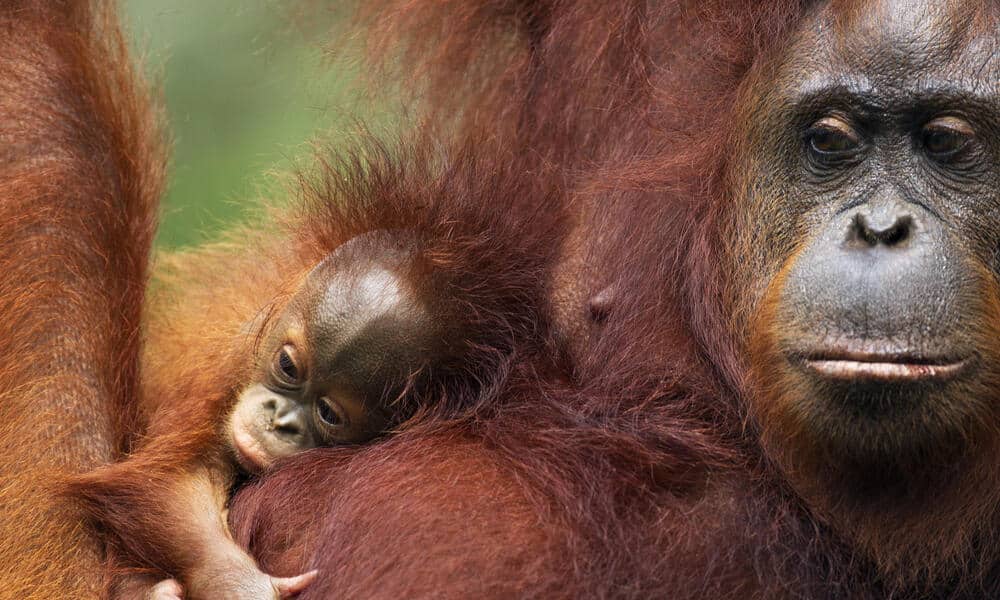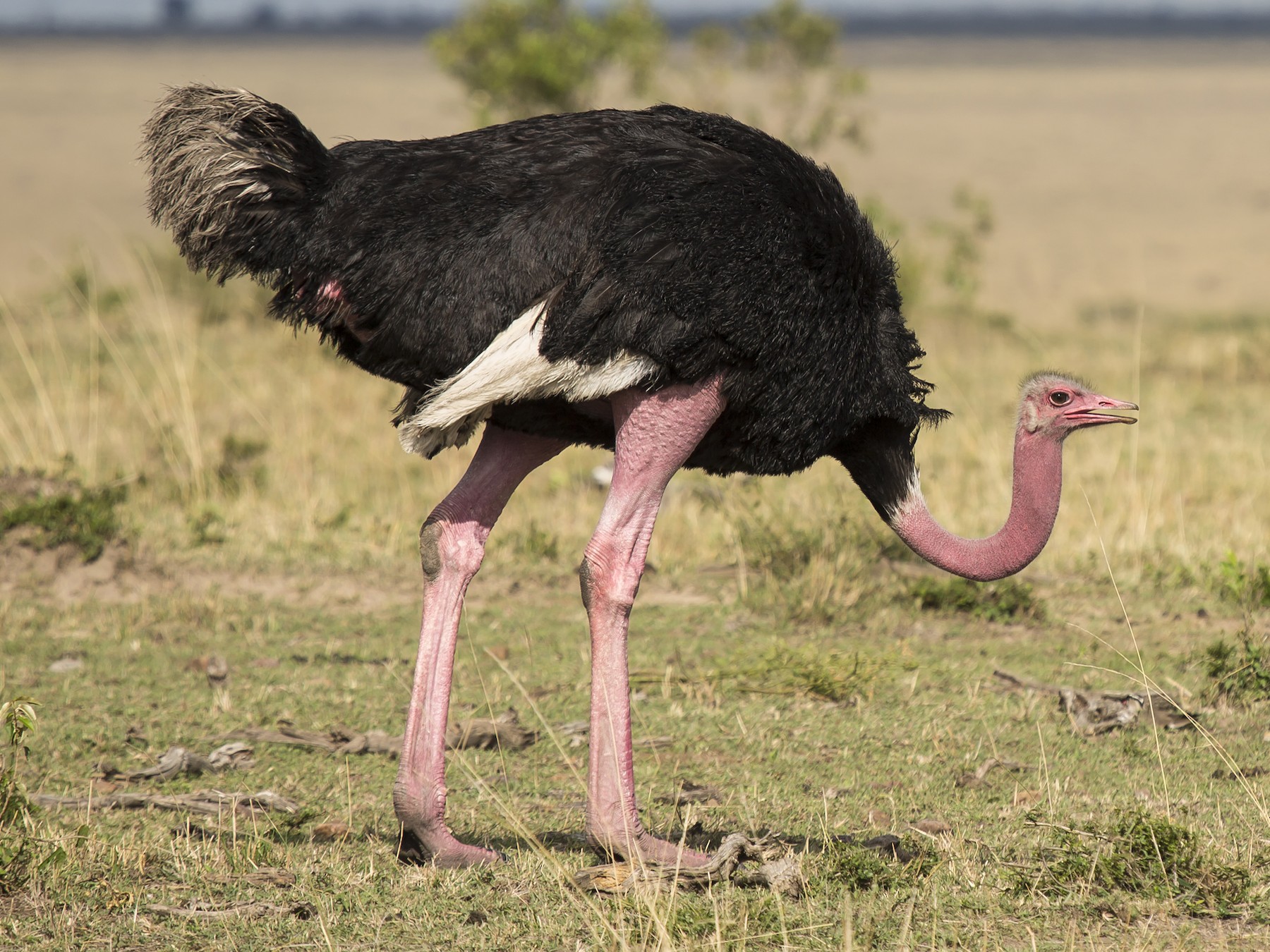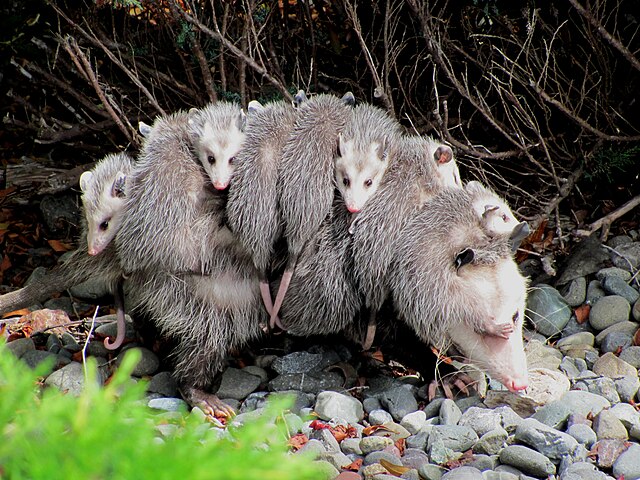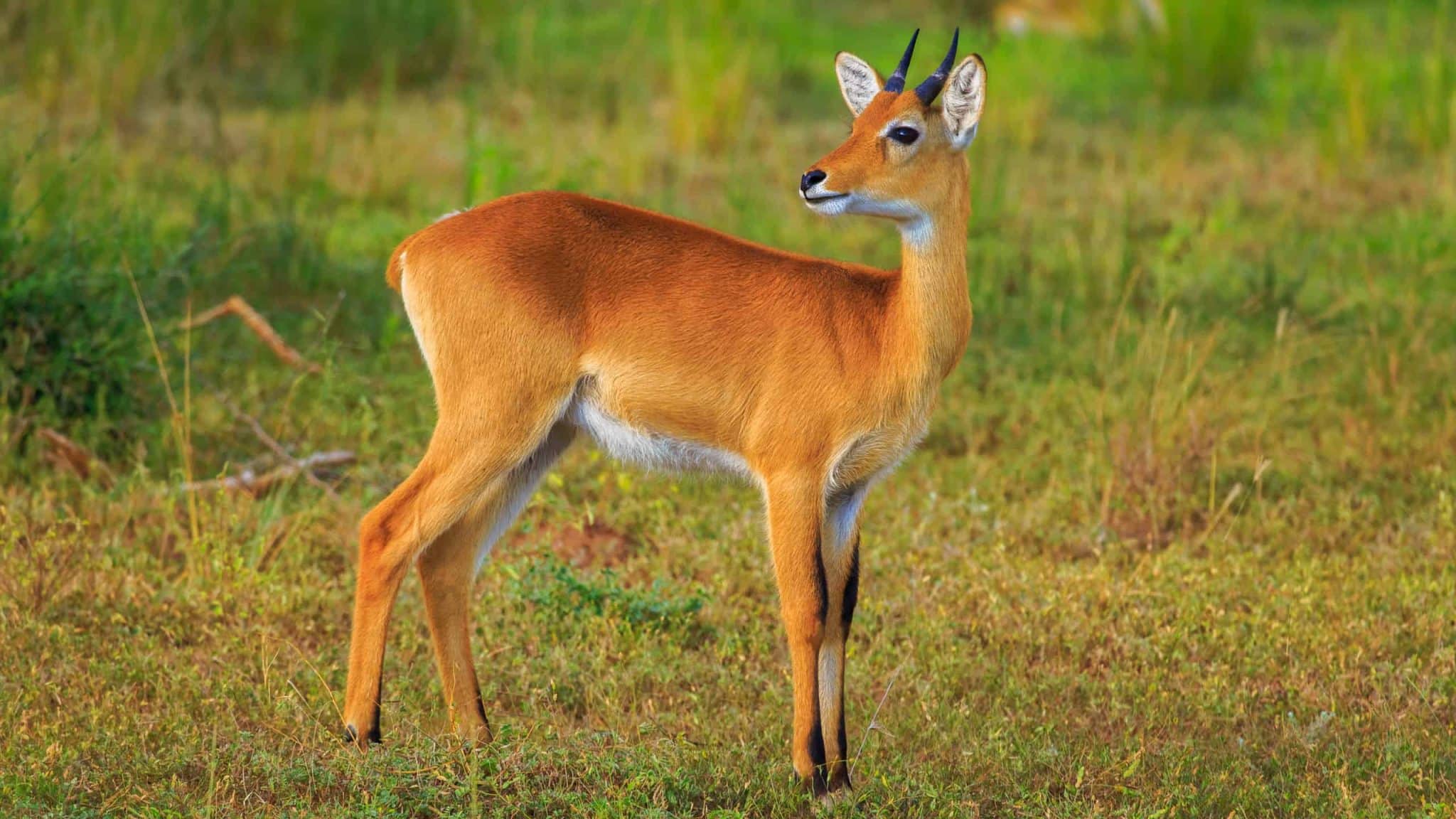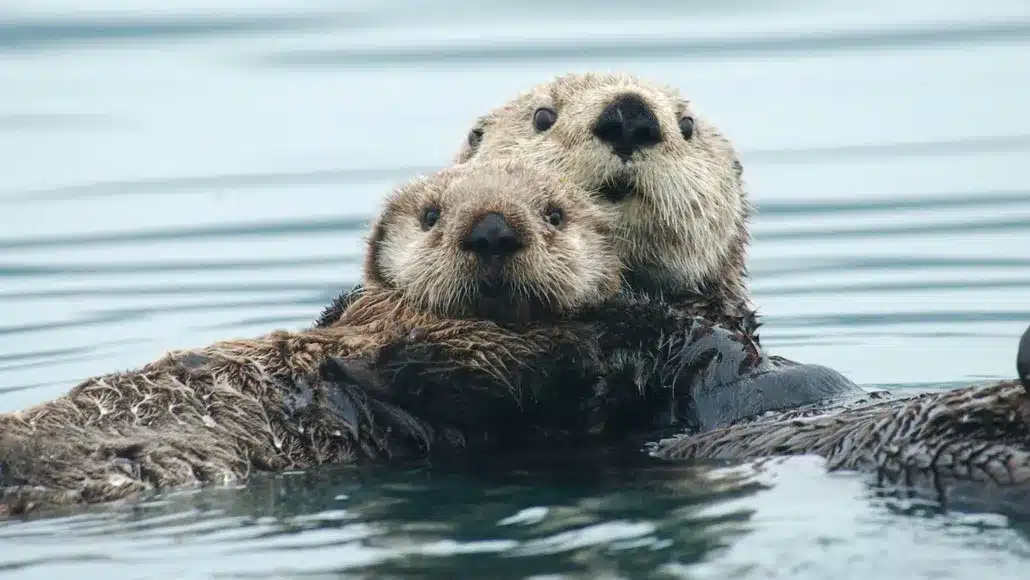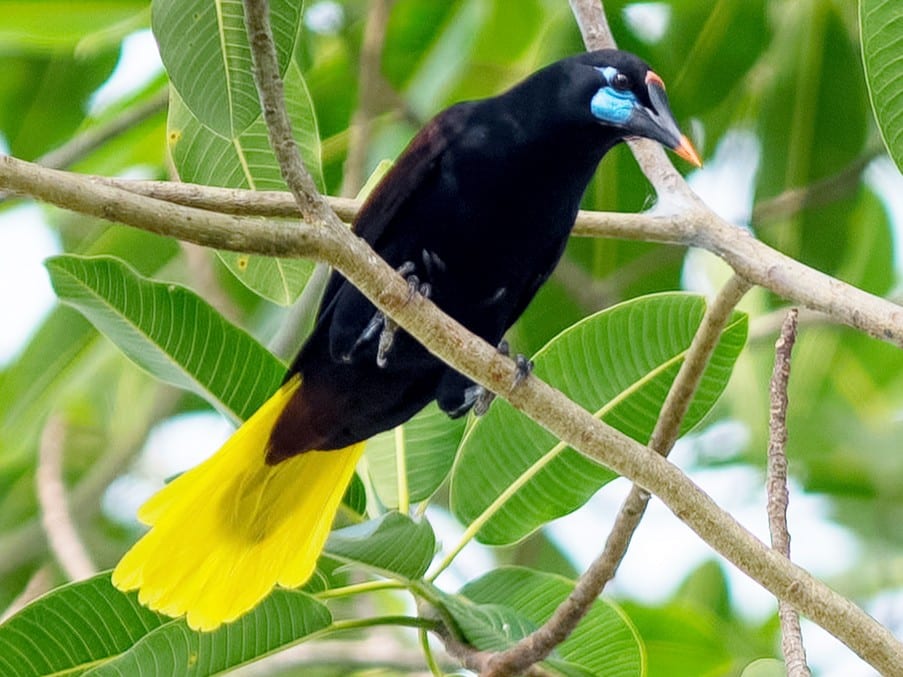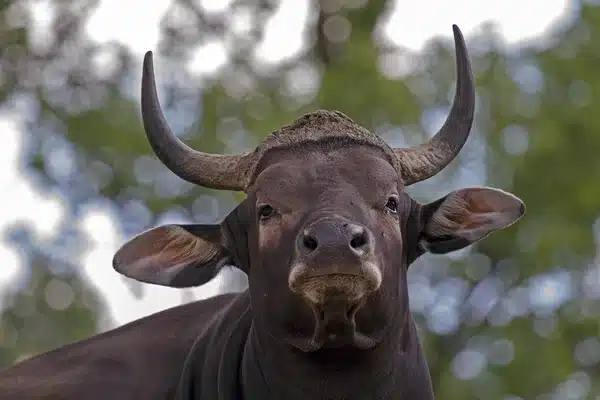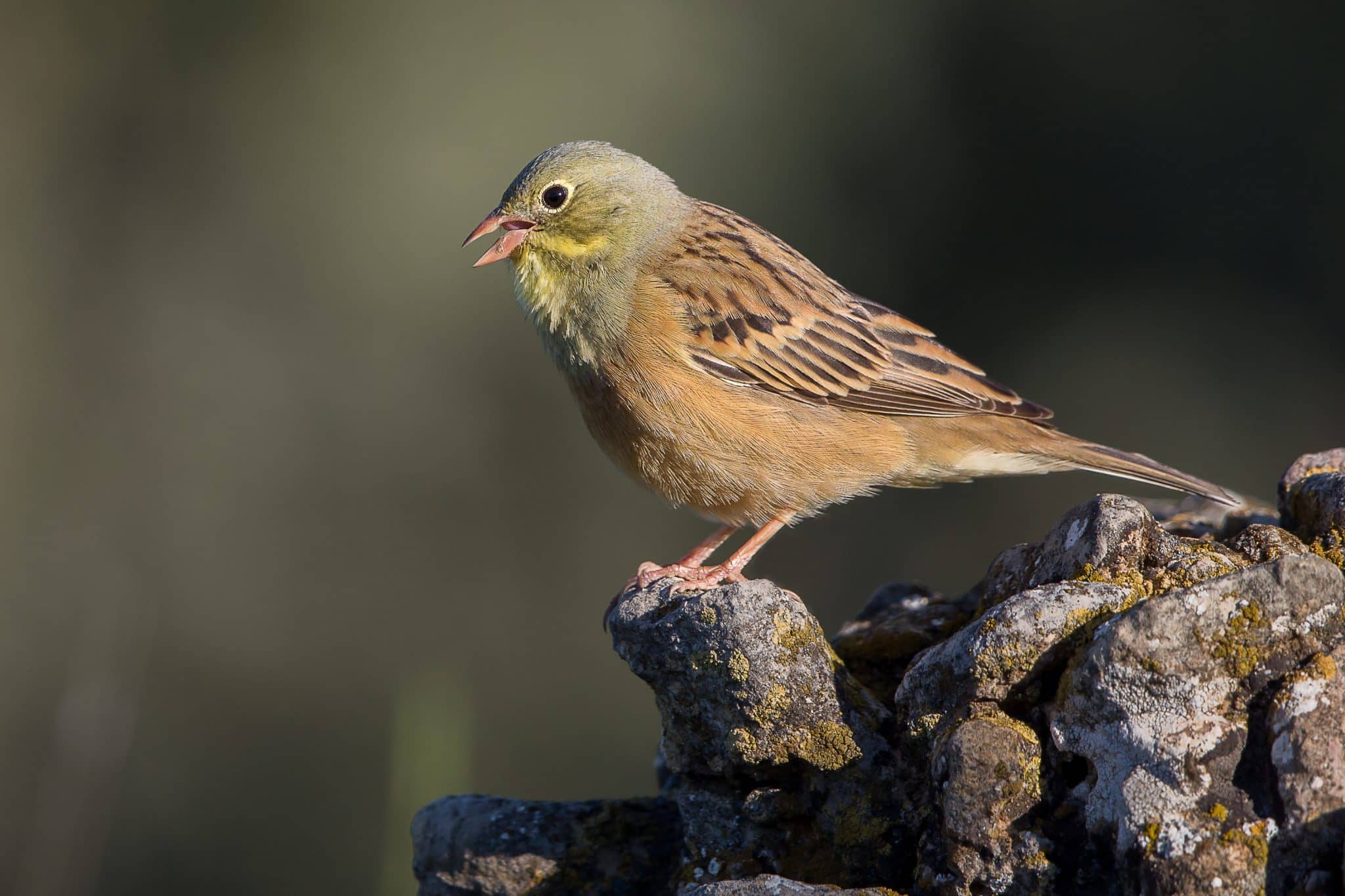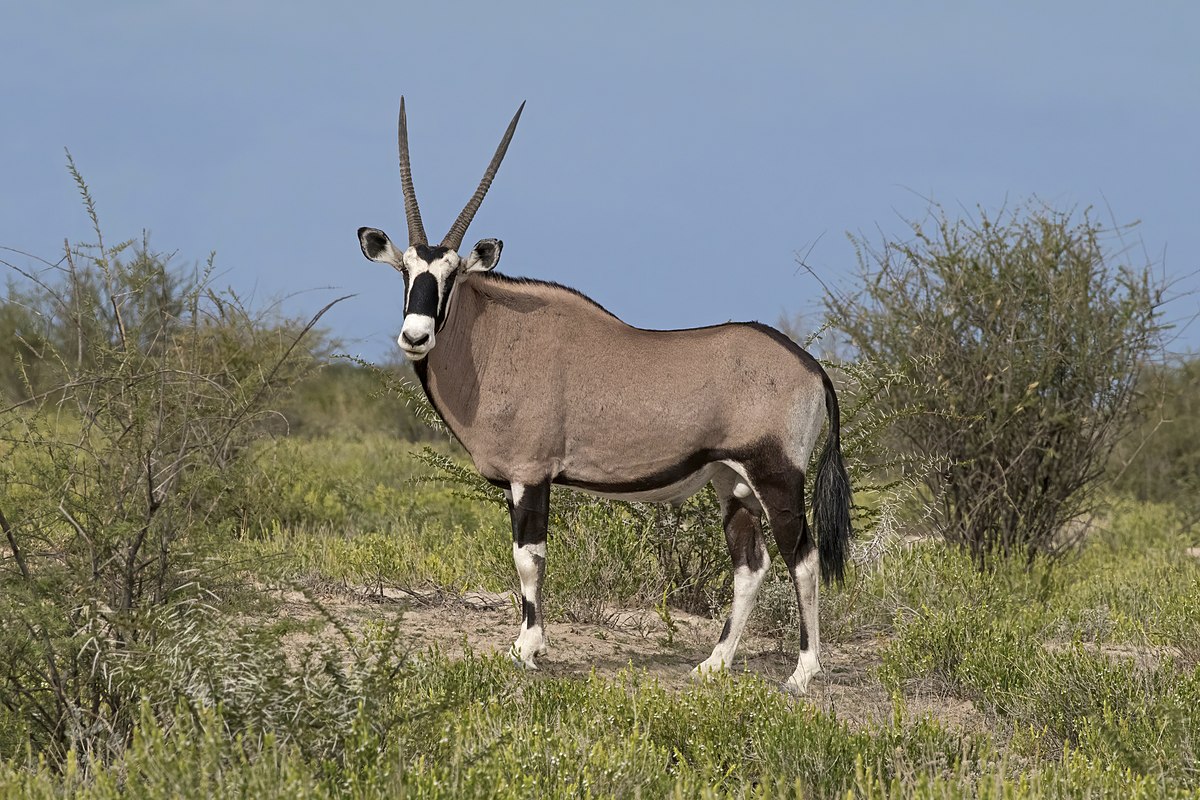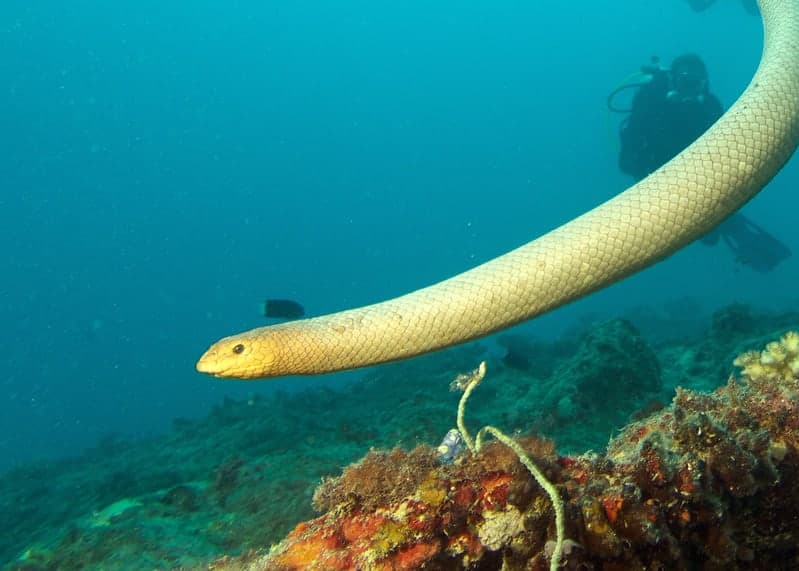Animals that start with the letter ‘O’ are a diverse and interesting group.
We have the Orca, also known as the killer whale, known for being smart and living in tight-knit family groups.
Then there’s the Okapi, which looks like a zebra but is related to giraffes and lives in dense African forests.
The Ocelot is a small wild cat with a beautiful spotted coat, living mostly in the forests of South and Central America.
Olive Ridley Sea Turtles are pretty cool, too; they gather in huge numbers to lay their eggs on beaches in an arribada process.
And let’s not forget about birds like the Osprey, an amazing fish hunter, and the colorful Oriole, known for its beautiful singing and unique nests.
These animals, and many more with names starting with ‘O’, have fascinating lives and play important roles in their environments.
Let’s get started!
List of Animals Starting with O
1. Ocelot
Place of Origin: Americas
Regions of Habitat: Rainforests, savannas, and brushlands
Scientific Name: Leopardus pardalis
Ocelots are medium-sized wild cats with distinct golden, black-spotted coats and elongated tails. They have striking markings around their eyes and on their cheeks. Typically, they weigh between 18 and 40 pounds and can reach up to 4 feet in length, including their tail.
Interesting Fact: Ocelots are nocturnal and highly territorial animals. They have a unique pattern of spots like fingerprints, with no two ocelots having the same markings. This camouflage helps them blend into their surroundings, making them adept hunters.
2. Okapi
Place of Origin: Central Africa
Regions of Habitat: Dense rainforests
Scientific Name: Okapia johnstoni
Okapis have a horse-like body with a long neck, similar to giraffes, and they feature reddish-brown coats with distinct white-striped patterns on their legs and hindquarters. They have large, flexible ears, which help them detect predators in the dense forest.
Interesting Fact: Despite their zebra-like stripes, okapis are the closest living relatives of the giraffe. The stripes help young okapis follow their mothers through the dimly lit rainforest underbrush. Okapis are also known for their elusive nature, which led to them being one of the last large mammals discovered by science in 1901.
3. Orangutan
Place of Origin: Southeast Asia
Regions of Habitat: Tropical rainforests of Borneo and Sumatra
Scientific Name: Genus Pongo
Orangutans are large apes with reddish-brown hair, long arms, and bulky bodies. They are highly intelligent and exhibit advanced tool use and complex social behavior. Adult males weigh up to 220 pounds and have distinctive large cheek pads.
Interesting Fact: Orangutans are known for their remarkable ability to use tools like sticks to gather food or aid in locomotion. They are also one of the most solitary of the great apes, with social bonds primarily between mothers and their dependent offspring. The extensive deforestation of their habitat has made them critically endangered.
4. Ostrich
Place of Origin: Africa
Regions of Habitat: Savannas, desert edges, and open woodlands
Scientific Name: Struthio camelus
The ostrich is the world’s largest bird, standing up to 9 feet tall and weighing up to 340 pounds. They have long necks and powerful legs and can’t fly, but they can run up to 45 miles per hour, making them the fastest two-legged animals on land.
Interesting Fact: Ostriches have the largest eyes of any land animal, measuring almost 2 inches across, which gives them excellent vision to spot predators. Despite popular belief, ostriches do not bury their heads in the sand. This myth likely originated from their behavior of lying low and pressing their heads to the ground when threatened.
5. Octopus
Place of Origin: Worldwide oceans
Regions of Habitat: Coral reefs, pelagic waters, and the ocean floor
Scientific Name: Order Octopoda
Octopuses are soft-bodied, eight-armed mollusks known for their intelligence and camouflage abilities. They can change color and texture to blend into their surroundings and have a bulbous head, large eyes, and a beak-like mouth.
Interesting Fact: Octopuses are highly intelligent and have been observed using tools, solving complex puzzles, and navigating mazes in laboratory settings. They can also escape enclosures and unscrew jars to get to food, showcasing their problem-solving skills and talent.
6. Olive Ridley Sea Turtle
Place of Origin: Warm and tropical waters of the Pacific, Atlantic, and Indian Oceans
Regions of Habitat: Open oceans, coastal bays, estuaries
Scientific Name: Lepidochelys olivacea
Olive Ridley turtles are small sea turtles known for their olive-green-colored shell. They grow to about 2 feet in length and can weigh up to 100 pounds. These turtles are named for their uniquely colored carapace.
Interesting Fact: Olive Ridley turtles are known for their mass nesting called arribada, where thousands of females come together on the same beach to lay eggs. Despite their wide distribution, their populations are threatened by egg harvesting, fishing nets, and pollution.
7. Oryx
Place of Origin: Africa and the Arabian Peninsula
Regions of Habitat: Deserts, grasslands, and savannas
Scientific Name: Genus Oryx
Oryxes are large antelopes with striking white coats, black facial markings, and long, straight horns. They are well adapted to harsh desert environments, with a diet that includes grasses, leaves, and fruits.
Interesting Fact: Oryxes can survive without water for long periods, obtaining moisture from their food. They are highly social animals, living in herds that can number up to several hundred individuals. Some species, like the Arabian Oryx, were once considered extinct in the wild but have been reintroduced successfully.
8. Osprey
Place of Origin: Worldwide, except for Antarctica
Regions of Habitat: Near freshwater lakes, rivers, coastal waterways, and estuaries
Scientific Name: Pandion haliaetus
The osprey is a large bird of prey with a wingspan of up to 6 feet. It is brown on the upperparts and predominantly greyish on the head and underparts, with a distinctive black eye patch and sharp talons.
Interesting Fact: Ospreys are remarkable fishermen, diving into the water with their sharp talons to catch fish. They have reversible outer toes and barbed pads on the soles of their feet to help grip slippery fish. They are the only raptors whose diet is almost exclusively fish.
9. Opossum
Place of Origin: North and South America
Regions of Habitat: Forests, wetlands, and urban areas
Scientific Name: Order Didelphimorphia
Opossums are small to medium-sized marsupials with a distinctive white face, greyish fur, and a long, hairless tail. They are known for their ability to play dead as a defense mechanism against predators.
Interesting Fact: Opossums have a remarkable immune system and are resistant to many diseases, including rabies. They also have a prehensile tail for gripping branches and carrying small objects. Their diet is extremely varied, including fruits, insects, small animals, and even garbage in urban areas.
10. Oriole
Place of Origin: Various, including North America, Europe, Africa, and Asia
Regions of Habitat: Woodlands, gardens, and orchards
Scientific Name: Family Oriolidae
Orioles are small to medium-sized songbirds known for their vibrant yellow and black coloring, though exact colors can vary widely among the different species. They have a strong, direct flight and are known for their beautiful, fluting songs.
Interesting Fact: Orioles are adept at weaving intricate, hanging nests from branches, using materials like grass, fibers, and twine. These nests can be quite elaborate and are often found dangling at the tips of branches, protecting from predators.
11. Oxpecker
Place of Origin: Sub-Saharan Africa
Regions of Habitat: Savannahs and open grasslands in close association with large mammals
Scientific Name: Genus Buphagus
Oxpeckers are small to medium-sized birds known for their unique association with large herbivores such as cattle, giraffes, and rhinos. They have sturdy bodies and sharp beaks and are primarily brown with lighter underparts.
Interesting Fact: Oxpeckers feed on ectoparasites, such as ticks, found on large mammals, which makes them valuable for their host animals. However, their relationship is somewhat controversial; while removing parasites, they also peck at wounds, potentially keeping them open longer than necessary.
12. Oribi
Place of Origin: Sub-Saharan Africa
Regions of Habitat: Grasslands, savannas, and light woodlands
Scientific Name: Ourebia ourebi
The oribi is a small, slender antelope with a reddish-brown coat and white underparts. It has long, slender legs, a short neck, and small, pointed horns in males. Oribis are known for their graceful and swift movements.
Interesting Fact: Oribis are highly territorial and use a unique system of scent marking to communicate with other species members. They have specialized glands near their eyes and feet for this purpose. When threatened, they perform a distinctive, high-leaping escape strategy called ‘stotting’ or ‘pronking.’
13. Oilbird
Place of Origin: Northern South America
Regions of Habitat: Dense tropical rainforests, especially in caves
Scientific Name: Steatornis caripensis
Oilbirds are nocturnal birds with long wings, a tail, a hooked beak, and dark, reddish-brown plumage speckled with white spots. They are the only nocturnal flying fruit-eating bird in the world and use echolocation, similar to bats, to navigate through dark caves.
Interesting Fact: Named for the oil-rich flesh of the young birds, which was historically harvested for oil, Oilbirds primarily feed on the fruits of the oil palm. Their echolocation ability, unusual among birds, is used to navigate within their dark cave habitats, making them unique among fruit-eating birds.
14. Olinguito
Place of Origin: Cloud forests of the Andes in South America
Regions of Habitat: Mountainous cloud forests
Scientific Name: Bassaricyon neblina
The olinguito is a small, recently discovered mammal related to raccoons and olingos. It has dense, woolly fur that is orange or reddish-brown, a round face with big eyes, and a bushy tail. The olinguito is the first new carnivorous species discovered in the Americas in over three decades.
Interesting Fact: The olinguito was mistaken for its close relative, the olingo, until 2013, when it was identified as a distinct species. This discovery highlighted the biodiversity of the Andean cloud forests and the importance of preserving these habitats.
15. Owl
Place of Origin: Worldwide, except for Antarctica
Regions of Habitat: Forests, deserts, tundra, grasslands, and urban areas
Scientific Name: Order Strigiformes
Owls are known for their distinctive facial discs, forward-facing eyes, and the ability to rotate their heads up to 270 degrees. They have a variety of sizes and colors, depending on the species, with soft plumage for silent flight and sharp talons for hunting.
Interesting Fact: Owls have exceptional hearing, with asymmetrical ear placements on their heads that allow precise triangulation of sounds, enabling them to pinpoint prey in complete darkness. Their silent flight is due to the specialized fringe on the leading edge of their primary feathers.
16. Otter
Place of Origin: Worldwide, except for Australia and Antarctica
Regions of Habitat: Freshwater rivers, lakes, oceans, coastlines, and wetlands
Scientific Name: Subfamily Lutrinae
Otters are semi-aquatic mammals known for their slender bodies, short limbs, webbed feet, and long tails. They have dense, water-repellent fur to keep them warm and dry. Otters are playful animals, often seen sliding on mud or snow.
Interesting Fact: Otters are skilled hunters, primarily eating fish and shellfish. Some species, like the sea otter, use rocks as tools to crack open shellfish, demonstrating remarkable intelligence and skill. They also significantly impact their environments, maintaining healthy fish populations and aquatic ecosystems.
17. Onager
Place of Origin: Asia
Regions of Habitat: Deserts, grasslands, and savannas
Scientific Name: Equus hemionus
The onager, also known as the Asiatic wild ass, is a wild member of the horse family. They have a sandy to reddish-brown coat, white undersides, and a distinctive dark stripe running down the middle of their back. They adapt well to desert life with their hardy nature and ability to survive on sparse vegetation.
Interesting Fact: Onagers are incredibly fast runners, capable of reaching up to 40 miles per hour, making them one of the fastest mammals in their habitat. This speed is a critical survival trait, allowing them to escape predators in the open landscapes they inhabit.
18. Oropendola
Place of Origin: Central and South America
Regions of Habitat: Tropical rainforests, woodlands, and plantations
Scientific Name: Genus Psarocolius
Oropendolas are notable for their large size, long tails, and striking plumage, typically featuring shades of black and chestnut. Males are significantly larger than females and have a unique, gurgling song that is as captivating as their appearance.
Interesting Fact: Known for their remarkable hanging nests, which can be over 6 feet long, oropendolas weave these nests from fibers and grasses suspended from the tips of tree branches. These nests swing precariously in the breeze but are intricately constructed to offer protection from predators and the elements.
19. Ovenbird
Place of Origin: North and South America
Regions of Habitat: Forests, woodlands, and thickets
Scientific Name: Seiurus aurocapilla
The ovenbird is a small songbird with olive-brown upperparts and spotted breast. It is named for its domed, oven-like nest constructed on the ground, camouflaged among dead leaves. Despite its inconspicuous appearance, it is known for its loud, teacher-teacher-teacher song.
Interesting Fact: The ovenbird’s nesting habits are unique among North American warblers, building a nest that resembles a Dutch oven on the forest floor. Their loud and persistent singing is crucial in establishing territories and attracting mates during breeding.
20. Ocellated Turkey
Place of Origin: The Yucatán Peninsula, parts of Belize and Guatemala
Regions of Habitat: Tropical forests
Scientific Name: Meleagris ocellata
The ocellated turkey is a stunning bird with iridescent bronze and green plumage, blue head, and tail feathers adorned with eye-shaped, metallic spots. It is slightly smaller than its North American cousin, the wild turkey, but more vibrant in color.
Interesting Fact: Unlike the gobble of the wild turkey, the ocellated turkey makes a distinct, high-pitched, sing-song series of notes. Its name comes from the eye-like spots (ocelli) on its tail feathers, resembling peacocks’ tail feathers.
21. Ox
Place of Origin: Domesticated worldwide, originally from wild aurochs
Regions of Habitat: Farmlands, grasslands, and areas where they are raised or work
Scientific Name: Bos taurus (domestic cattle)
Oxen are large, sturdy domesticated bovines typically used as draft animals. Their muscular build and broad shoulders characterize them, and they often have a hump over their shoulders. Their coats can vary widely in color.
Interesting Fact: Humans have used oxen for thousands of years for plowing fields, pulling carts, and transporting goods. They are known for their strength and docile temperament, making them ideal working animals in various agricultural settings.
22. Ocelot Gecko
Place of Origin: Madagascar
Regions of Habitat: Tropical forests and rocky areas
Scientific Name: Paroedura picta
The ocelot gecko is a small to medium-sized lizard known for its distinctive, ocelot-like patterning, which includes bands and spots. It has a robust build, large eyes, and a granular skin texture, typical of ground-dwelling geckos.
Interesting Fact: Ocelot geckos are nocturnal and can camouflage themselves against the forest floor, making them difficult to spot. They are also quite adaptable and can survive in various environments, from dry forests to human dwellings.
23. Orca (Killer Whale)
Place of Origin: Worldwide, in all oceanic regions
Regions of Habitat: From polar seas to more temperate and tropical waters
Scientific Name: Orcinus orca
Orcas, or killer whales, are the largest members of the dolphin family. They are easily recognizable by their black-and-white coloring and the distinctive dorsal fin of the males, which can reach up to 6 feet in height.
Interesting Fact: Orcas are apex predators with sophisticated hunting techniques and vocal behaviors, often specific to particular groups and passed across generations. They are known for their complex social structures, similar to those of elephants and higher primates.
24. Oustalet’s Chameleon
Place of Origin: Madagascar
Regions of Habitat: Rainforests and arid plateaus
Scientific Name: Furcifer oustaleti
Oustalet’s chameleon is one of the largest species, with individuals capable of reaching over 2 feet in length. They have a prehensile tail, zygodactylous feet, and a long, sticky tongue for catching prey.
Interesting Fact: This chameleon is known for its ability to change color, a common trait among chameleons, used for communication and temperature regulation rather than camouflage. They are also known for their slow and deliberate movements.
25. Oriental Shorthair
Place of Origin: Developed in the United States and Europe, based on Siamese cats
Regions of Habitat: Domestic environments
Scientific Name: Felis catus (domestic cat)
The Oriental Shorthair is a domestic cat breed with a slender, muscular body, a wedge-shaped head, and large, pointed ears. They are known for their wide variety of coat colors and patterns.
Interesting Fact: Oriental Shorthairs are known for their social, playful, and vocal nature. They form strong bonds with their owners and are known to be quite expressive about their needs and desires, much like their Siamese ancestors.
26. Olingo
Place of Origin: Central and South America
Regions of Habitat: Tropical forests
Scientific Name: Genus Bassaricyon
Olingos are small to medium-sized tree-dwelling mammals related to raccoons. They have dense, soft fur, ranging from golden to brown, and a bushy tail. Olingos are nocturnal and have a diet consisting mainly of fruits and insects.
Interesting Fact: Olingos are often mistaken for their close relatives, olinguitos and kinkajous, but they can be distinguished by their longer tails and less woolly fur. They are elusive animals, and much of their behavior, including their social structure and reproduction, remains a mystery.
27. Ortolan Bunting
Place of Origin: Europe and Western Asia
Regions of Habitat: Open countryside, farmlands, and grasslands
Scientific Name: Emberiza hortulana
The Ortolan bunting is a small songbird with a stocky build, a streaked brown back, and a grey head in males. They are known for their sweet, melodious song, a hallmark of European summers.
Interesting Fact: The ortolan has been a controversial delicacy in French cuisine, traditionally caught and fattened before being eaten whole. This practice has led to legal protection for the species in some countries due to ethical concerns and declining populations.
28. Oryx Gazella
Place of Origin: Southern Africa
Regions of Habitat: Arid plains, deserts, and savannas
Scientific Name: Oryx gazella
The oryx gazelle, or gemsbok, is a striking antelope with long, straight horns and a distinctive black-and-white face mask. They have a robust build and are well-adapted to harsh, arid environments.
Interesting Fact: Gemsbok can survive in extremely hot conditions without water for extended periods. They can raise their body temperature to avoid perspiration, conserving water. They get moisture from the food they eat and by digging for water sources.
29. Olive Baboon
Place of Origin: African savannas and forests
Regions of Habitat: Across 25 African countries, from Mali in the west to Ethiopia and Tanzania in the east
Scientific Name: Papio anubis
The olive baboon is one of the largest species, named for its olive-green coat. They have powerful jaws, sharp canine teeth, and a complex social structure, living in groups called troops.
Interesting Fact: Olive baboons are incredibly adaptable and can live in various environments. Their social interactions are complex, with a clear hierarchy and roles within the troop. They are known to use over 30 different vocalizations to communicate.
30. Oriental Fire-bellied Toad
Place of Origin: Northeastern China, Korea, and parts of Russia
Regions of Habitat: Forests, meadows, and near freshwater sources like streams and ponds
Scientific Name: Bombina orientalis
This small toad is known for its vibrant green and black mottled back and bright orange to red belly, which it displays to predators as a warning of its toxic nature. They are semi-aquatic and have a distinctive, bumpy skin texture.
Interesting Fact: The bright coloration of their underside is an example of aposematism, a biological term for the warning colors that signal toxicity or danger to predators. When threatened, they assume a defensive posture to expose their brightly colored belly, deterring potential threats.
31. Opah (Moonfish)
Place of Origin: Worldwide in tropical and temperate waters
Regions of Habitat: Deep, pelagic waters
Scientific Name: Lampris guttatus
The opah, or moonfish, is a large, round, and colorful fish with a deep body, bright red fins, and a silvery body with red spots. It’s unique in shape, resembling a large, flattened disc, and can grow up to 6 feet long and weigh over 600 pounds.
Interesting Fact: The opah is one of the few fully warm-blooded fish, allowing it to inhabit cold, deep waters inhospitable to many other species. This adaptation gives it a competitive advantage in deep-sea hunting, allowing it to move quicker and react faster than its cold-blooded prey and predators.
32. Orange-bellied Parrot
Place of Origin: Southeastern Australia
Regions of Habitat: Coastal shrublands and grasslands
Scientific Name: Neophema chrysogaster
This small, brightly colored parrot features a vivid green upper body, blue wings, and a distinctive orange belly. It’s known for its quiet and unassuming nature, making it difficult to spot in the wild.
Interesting Fact: The orange-bellied parrot is critically endangered, with wild populations declining drastically due to habitat loss, predation, and disease. Conservation efforts, including breeding programs and habitat restoration, are in place to prevent its extinction.
33. Ocellated Lizard
Place of Origin: Southwestern Europe and Northwestern Africa
Regions of Habitat: Woodlands, grasslands, and rocky areas
Scientific Name: Timon lepidus
The ocellated lizard is one of the largest lizard species in Europe, known for its vibrant green and blue coloration, with eye-like spots (ocelli) across its body. Males are particularly colorful, especially during the breeding season.
Interesting Fact: Despite their bright colors making them conspicuous, the ocellated lizard’s coloration is a form of camouflage, blending in with the dappled light of their woodland habitats. They can also shed their tail when threatened, a common defense mechanism among lizards.
34. Oriental Hornet
Place of Origin: Parts of Asia, Northeastern Africa, and the Eastern Mediterranean
Regions of Habitat: Warm temperate to tropical climates, often near human habitation
Scientific Name: Vespa orientalis
The oriental hornet is a large species with a distinctive yellow and brown striped abdomen. They are known for their large paper nests and are more active during the day than other hornet species.
Interesting Fact: The oriental hornet can convert sunlight into electrical energy, thanks to a pigment in its exoskeleton called xanthopterin. This unique feature is thought to help them be more active in sunlight, providing extra energy.
35. Olive Sea Snake
Place of Origin: Northern Australian waters and the surrounding regions
Regions of Habitat: Coral reefs and rocky shores
Scientific Name: Aipysurus laevis
The olive sea snake is a venomous marine snake with a sleek, olive-green body and a paddle-like tail for swimming. When submerged, they are well-adapted to life in the water, with valves to close their nostrils.
Interesting Fact: Despite their evil nature, olive sea snakes are generally not aggressive towards humans unless provoked. They have a curious nature and have been known to approach divers. Their venom is highly potent, primarily used for immobilizing prey.
36. Oustalet’s Tyrannulet
Place of Origin: South America, specifically the Andean regions
Regions of Habitat: Subtropical or tropical moist montane forests
Scientific Name: Phylloscartes oustaleti
This small bird is part of the tyrant flycatcher family, characterized by its olive-green upperparts, pale underparts, and distinct eye-ring. They are active insectivores, often seen flitting about in the canopy for prey.
Interesting Fact: The Oustalet’s tyrannulet is named after French zoologist Émile Oustalet. This bird is an excellent example of the diverse avian life in Andean cloud forests, contributing to the rich ecosystem by controlling insect populations.
37. Ochre-breasted Antpitta
Place of Origin: South America, particularly in the Andes
Regions of Habitat: Dense, humid montane forests
Scientific Name: Grallaricula flavirostris
The ochre-breasted antpitta is a small, elusive bird with a rounded body, short tail, and stout legs. It has a distinctive ochre-colored breast and belly, with darker, scaled upperparts.
Interesting Fact: Antpittas, including the ochre-breasted variety, are known for their unique feeding behavior, hopping on the forest floor to disturb insects and other small invertebrates, which they then quickly consume. They are often more heard than seen due to their shy nature and the dense habitats they prefer.
38. Ornate Hawk-Eagle
Place of Origin: Latin America, from Mexico to Argentina
Regions of Habitat: Tropical rainforests
Scientific Name: Spizaetus ornatus
The ornate hawk-eagle is a striking bird of prey known for its black and white plumage, with a distinctive crest of feathers on its head. It has powerful talons and a sharp beak, typical of raptors.
Interesting Fact: The ornate hawk-eagle is an apex predator within its habitat, feeding on various birds, mammals, and reptiles. Its haunting call and majestic appearance make it a symbol of tropical rainforests, but habitat loss threatens its existence.
39. Otago Skink
Place of Origin: New Zealand, specifically the Otago region of the South Island
Regions of Habitat: Grasslands and rocky areas
Scientific Name: Oligosoma otagense
The Otago skink is one of the largest skink species in New Zealand, known for its distinctive black and gold patterned skin. They are robust and can grow up to 12 inches in length.
Interesting Fact: The Otago skink is critically endangered due to habitat destruction and predation by introduced species. Conservation efforts, including habitat protection and predator control, are underway to save this unique reptile from extinction.
40. Oahu Amakihi
Place of Origin: Hawaii, specifically the island of O’ahu
Regions of Habitat: Forests, especially in higher elevation areas
Scientific Name: Chlorodrepanis Flava
The Oahu amakihi is a small honeycreeper with olive-green plumage and a slightly downcurved beak for feeding on nectar. Despite its small size, it has a loud and variable song.
Interesting Fact: The Oahu amakihi has shown a surprising resilience to avian diseases that have decimated other Hawaiian bird populations. Its adaptability to changing environments gives hope for its survival amidst the threats to Hawaii’s native birds.
Final Thoughts
Many wonderful animal names start with O; we are sure most are new to you. Each animal brings its story, from the intelligent and friendly orca to the unique okapi.
Each organism has its unique identifying features and distinct survival strategies. They play a unique role in sustaining life in their ecological niche and on the planet.
Their fascinating behaviors and interactions remind us of the wonders of wildlife. Preserving these remarkable species and their habitats for future generations is important.
Our list has ended. However, the diversity of animals that start with O does not end with the list.
Comment and share your views on your favorite animal from the list!




